Understanding quilt blocks
If you are new to quilting you might feel overwhelmed by all the types of quilt blocks there are. These are essential to the creation of the quilt top (the top part of your quilt) which is your first step when making one.
Knowing the most popular blocks will help you to also create your own quilts based on your favourite blocks and preferred measurements.
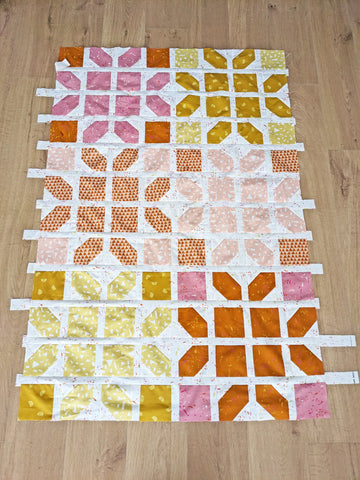
Example of a quilt top where you can clearly see the grid structure
Types of blocks and quilts based on grids
Many blocks and quilt designs are based on a grid or can be broken down into one. A quilt is made out of blocks; the different squares on a block are called units or portions. This might feel a bit constrained for some quilters, but I think it is the best way to start your quilting journey with.
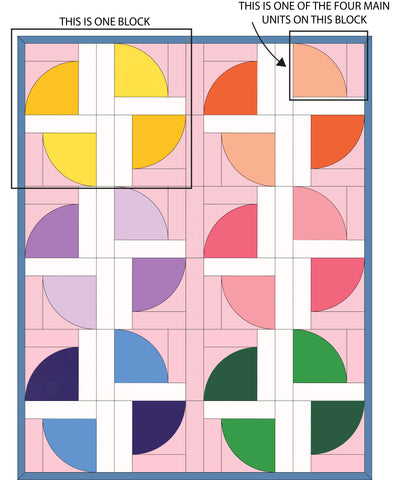
When choosing a quilt to make from a pattern company or when creating your own, you should have in mind that each division within a grid square means extra piecing, therefore more time needed on that particular project.
It is also important to consider the size of the block; the most common ones are 6'', 9'' and 12''. If you are a beginner, bigger blocks with not many units within them are the best way to go.
Now, for the most usual blocks based on grids:
- 2'' x 2'' or Four-Patch block: great for beginners and for scrappy quilts.
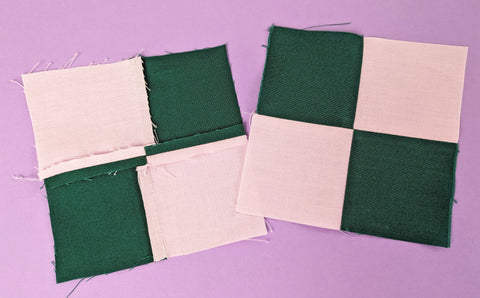
- 3'' x 3'' or Nine-Patch block: I used many 9-patch blocks for my Quilted Nutmeg Jacket sew and quilt-along sample.
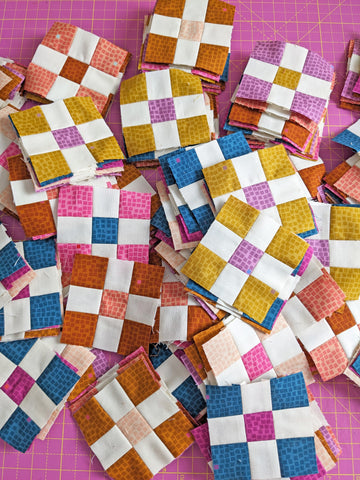
- 5'' x 5'' block: versatile and offering a centre point. A quilt can also have an odd number of blocks so that you can bring focus to the centre block with a special or different design.

- 7'' x 7'' block: 49 squares for intricate quilt designs and smaller pieces of fabric.
NOTE:
- Even-numbered grids allow for symmetrical designs.
- Odd-numbered grids allow for designs oriented towards a centre unit.
With practice, you can also choose a different grid layout with blocks placed on one of the points, like a diamond, rather than straight. These are called ‘quilts that are on point’.
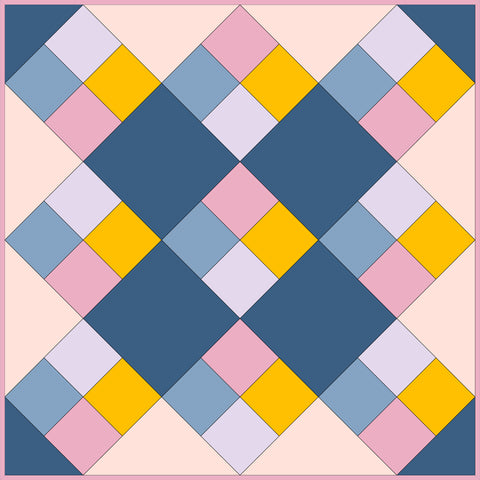
Basic quilting units or building blocks
Sometimes the so called basic quilting units that form a block are used as blocks themselves (i.e. a Nine-Patch block) and other times they are used as building blocks, meaning they are part of a bigger block mixed-up with other blocks or units.
Some of the most popular ones are:
- HSTs or Half-Square Triangles: these are great for beginners. Below, you can see an example of HSTs used as main blocks for a quilt.
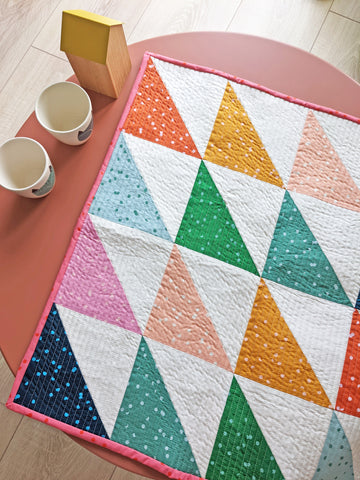
Meanwhile here, you can see them as part of a bigger block, fulfilling their role as building blocks or units.
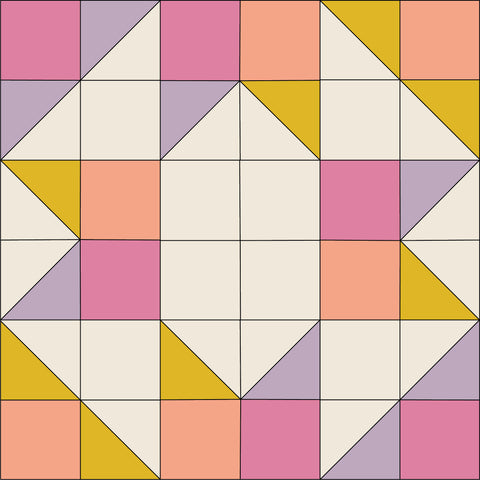
- QSTs or Quarter-Square Triangles: thee blocks are similar to the HSTs and as widely used.
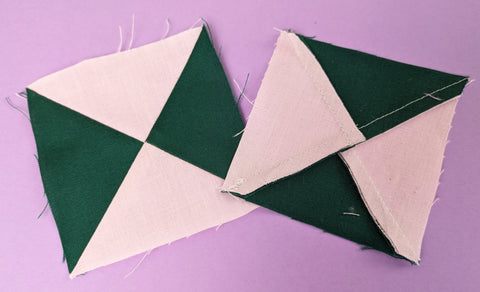
You can see them also below as part of a 9-patch block.
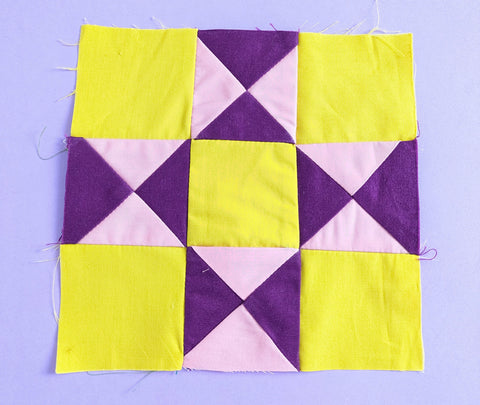
- Flying Geese: these are one of the most popular building blocks or units, used on many other bigger blocks and even on sashing strips.

Here you can see them as part of a block.
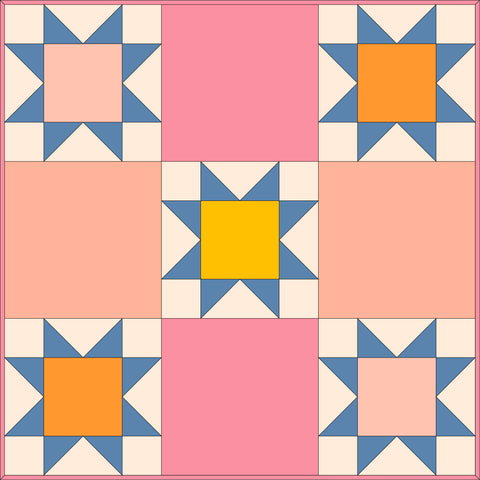
Other popular blocks
Apart from these, there are many other popular blocks like the Churn Dash, Log Cabin, Friendship Star, Economy Block, Shoo-Fly, Sawtooth Star, Bear Paw, Maple Star, Bow Tie, Pinwheel, Maple Leaf…
You will find many of these in the known as 'sampler quilts'. These are like your reference library books but in the shape of a quilt and made out of fabric instead :) Sampler quilts are great for practising different blocks and to gain more confidence in your quilting.
I did many of the ones I mentioned above when I started designing quilts and it was a very useful, insightful process. Take a look at some of my samples below.
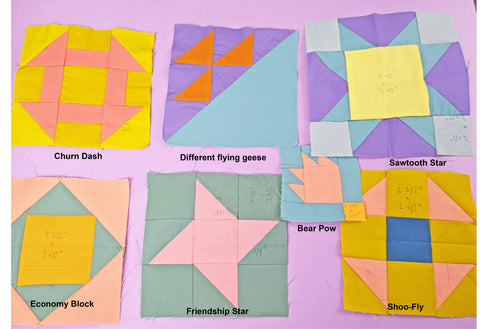
And that's it for this post! I hope you found it interesting and that your quilting knowledge is growing post after post.
Thanks for reading and see you soon!
Ana
xxx
